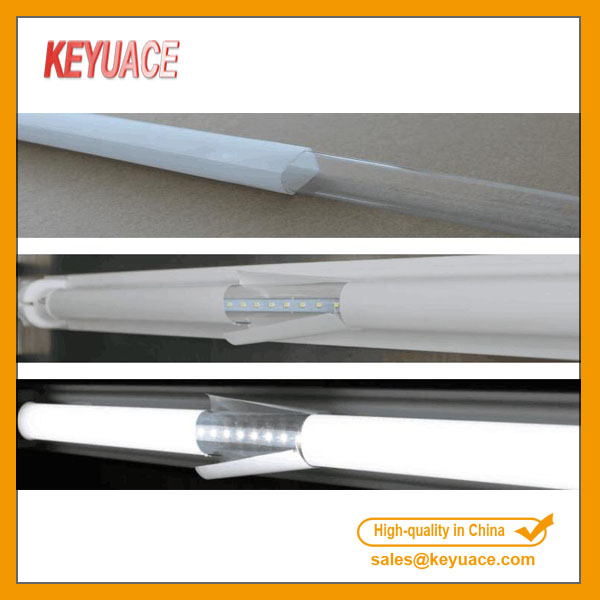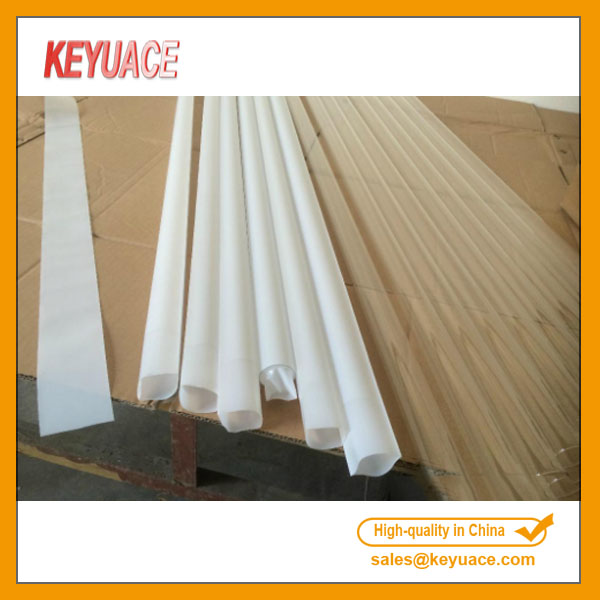The main factor determining the sound quality of the speaker
We listen to audio equipment, of course, paying attention to its sound quality. One author wrote a speaker speaker; the sound quality is the most important, and it doesn't matter what material is used in the speaker diaphragm. There is no logical problem in this sentence, the key is in essence. This sentence seems to be the opposite, speaker diaphragm material is very important, the diaphragm material plays a vital role in the sound quality of the speaker. Different diaphragm materials determine the sound quality orientation of the speaker, or in order to satisfy the sound quality of the speaker, and try to choose a new material. The choice and use of a new material often means a change to the speaker cabinet. In the early years, the electric speaker basically used a pulp diaphragm, which was called a cone speaker. Polypropylene diaphragms (PP pots) appeared in the 1990s; the subsequent appearance of bulletproof cloth diaphragms (Kevlar fibers) gave a refreshing feeling. The different sounds of speakers such as Thiel and AE have a lot to do with their metal diaphragms.
What is good sound quality?
In the audio industry, audio and music lovers, the term sound quality is almost a day and night. What is the sound quality? Like many everyday concepts, we rarely think about it and rarely go into it. As the name implies, or the meaning of the text, the sound quality is the quality of the sound. But what is the quality of sound? How does the quality of sound behave, how to measure it, and how to evaluate it? Is there an objective and consistently accepted standard?
The difference in understanding of vocals is even more ambiguous. We can distinguish between strangers and acquaintances, people who are familiar with them, and even "no one sees them, such as smelling their voices." With footsteps, door sounds, and coughing sounds, you can accurately identify the arrival of your acquaintances. The auditory impression corresponding to this distinction is called the sound color, and the various sounds have their own characteristics, and the sound has a mysterious color that cannot be seen or touched. When evaluating sounds and describing sounds, they often feel poor. Therefore, we ask for help from our daily experience. Since there are colorful pictures, we can have a colorful voice. In addition to color, we describe sound music as a constant use of familiar daily life experiences. The sense of warmth describes the heat and cold of the sound; the physical sense describes the soft, brittle, loose, and hard sound; the physical sense describes the thick, thin, narrow, and wide sound. The tone is related to the composition and time structure of the sound. We may wish to ask the timbre question a little deeper in physics. There are all kinds of sounds in the world, and there are a wide variety of musical instruments in various parts of the world. Naturally, their sounds are different. The tone is also related to the composition of the sound. The sound component is simple, the purest is pure sound, and there is very little pure sound in nature. A pure tone of various frequencies can be emitted by an instrument such as an audio signal generator. Recently, magazines have burnt pure tone signals into CD-ROMs, which is convenient for many readers without instruments. What is the taste of 400Hz, 600Hz pure tone, really need to feel, especially for people who have never felt before. The feeling of pure sound is "light", "clear", "light" is the light and pale of the sky; "clear" is the clear of the water to the clear. The sound is thin, it is not music, the sound composed of multiple component sounds, the tone is fuller. All kinds of instruments (except for electronic instruments first) are not pure frequencies of a single frequency, single vibration. The instrument sound is generally composed of harmonics that are integer multiples of the pitch and pitch. Almost all sounds in nature are complex sounds, including harmonics and noise with different amplitudes, resulting in different sounds.
The spectrum of the flute is less visible from the figure. The range of the flute is still relatively narrow, between 600 and 6000 Hz. Mozza has played two flute concertos, showing the various sounds of the flute. Some people like to call the flute "flowery soprano", showing the hobby of the flute.
The spectrum of the violin, which includes many higher harmonics, indicating that the tone is full and round. The sound of strings is extremely full and complex. People praised the famous Stradivari and the melons of Italy 200 years ago. Even the violin made with the same shape, size, materials and craftsmanship is hard to find. Experience tells us that it is very difficult to find two identical people in the world. It is quite difficult to find two violins with the same tone, not to mention the different players' playing skills and control the changes in the tone.
There will also be some noise in the instrument. Like percussion instruments, noise plays an important role in the tone. A sly spectrum. There is no integer relationship between the constituent tones, the sound is messy, and there are a lot of noises. Even for the violin, the bow is pulled on the four strings, and the bow is scented with rosin. When the bow pulls the string, it will not only sound like a song. v., a dreamlike and touching piece of music. There will also be frictional noise, the higher the pull, the bigger the noise. Some enthusiasts say they can hear the pine scent of the violin, and so far no sound has been found to spread the scent. The association caused by this kind of friction noise is probably the pine scent that some of our fans have heard. In addition, the tone is also related to the time structure, that is, it is closely related to the way the sound is established and attenuated. The piano spectrum is shown. The sound of the piano starts to be strong, and then gradually fades. The organ is gradually enhanced to maintain a certain sound level in a short time, and then decays relatively quickly. This can also be called a sound shape and an envelope.
To sum up the above meanings, the reason why there are different sound colors, in terms of composition, is because each sound component is different. It has a lot of harmonics and noise; these harmonics and noise can have certain rules, and there can be no rules. From the time structure, it is different in shape, and the relationship between the diaphragms at the same time is also different. This combination change is endless. A good speaker is to reproduce the sound characteristics of the music itself without distortion. For cooking, some people like the original taste, some people like to add a little MSG. In the past, there were some small bags in the waist of the chef. It was a kind of dry-ground powder of sea fish. It was slightly added, and it was quite different. Sichuan cuisine has a wide variety of ginger, spicy and sesame flavors, and it has a rich flavor. Which one is good is a matter of opinion. The sound reproduction of the speaker cabinet is not distorted, and the sound is required to be reproduced, but people are also required to listen to it. The two folds form a variety of speaker speakers.
The replay quality of the speaker is mainly determined by the diaphragm material.
As far as the commonly used and popular electric speakers are concerned, the objective test indicators mainly depend on their structure and geometry. The sound quality depends on the speaker diaphragm material, the type of diaphragm material and its physical properties. For example, B&W 801, its low-frequency unit diaphragm originally used aluminum alloy diaphragm, although the test results are good, but the subjective sound quality evaluation is not so ideal, so the paper frame diaphragm mixed with 10% Kevlar fiber is finally used.
According to the study of the sound quality of the loudspeaker diaphragm, it depends on the three parameters of the diaphragm: they are the elasticity of the diaphragm material (using the elastic modulus E), the density (p) and the appropriate internal damping. That is, it is desirable to have a high modulus of elasticity E, a small density p, and proper internal damping. In this way, the speaker has a fast propagation speed, a fast rise, and proper internal damping to dampen unnecessary clutter, the vibration stops falling fast, and the sound is clean and soft. But there is no gold in the red, no one is perfect. There is no absolutely ideal diaphragm material in the world. For example, steel alloy diaphragms have high elastic modulus, low density, fast response to vibration, and strong explosive power. However, the damping inside the metal is small, and it is difficult to stop the vibration quickly, and the sound is not clean. On the contrary, for pulp materials, the sound is softer and the sound rises more slowly, but the speed is slower and the strength is not very strong. It is very difficult to satisfy materials with large E/p and sufficient internal damping. In recent years, the development of materials technology has seen many new materials. For example, some tapered diaphragms use traditional pulp, glass fiber, Kevlar fiber (bulletproof cloth), and other composite materials such as TPX, HD-A, HD-1, and the performance is greatly improved.
"What material is not used for the diaphragm is not important, as long as the sound quality is good." This sentence can be considered as "what kind of diaphragm material is used to determine the sound quality of the speaker."
We often see people evaluating the transient response of a speaker, mentioning that a certain speaker has a good transient or a transient response. After careful analysis, the problem comes. There are two situations in the transients we often talk about. One is rising, the sound is from nothing, the other is falling, and the sound is from nothing to nothing. We hope that the sound will be completed in an instant from nothing, and it will be completed in an instant, but it is very difficult. It takes almost a material to rise faster and drop faster, which is almost impossible. For example, metal materials, the rise is faster, and the decline is slower. It will produce a damped oscillation, which is not so easy to disappear. There is a lack of moon and clearness in the moon. People have joys and sorrows. It is not an easy task to have both ends of the speaker.
Therefore, there are different diaphragm materials, and there are speakers with different sound qualities. Or, with 10,000 different types of diaphragms, there will be 10,000 different speakers. In the Qing Dynasty, Yan Yi had a poem about painting:
Xing came to write the mountains, and the spring stones appeared in the clouds.
Ten days of paper do not tire of speed, expensive to draw is not a shape.
For the speakers, as well as painting, there is something in common. We want to be shaped (not distorted), but also to draw meaning (good sound quality), we try to do both, it is impossible. "You take the picture is not a form" is a choice.
LED-Fluorescent Lamp Protection Sleeves/PET Explosion-proof tube LED Light Heat Shrink Tube
Product Description:
LED-Fluorescent Lamp Protection Sleeves is made of PET materials, PET Explosion-proof tube LED Light Heat Shrink Tube with superior transparency, good heat dissipationeffect, insulation, protect the glass not to break.
Feature & benefit:
a) White LED-PET heat-shrink tube can homogenize the dot light to area light.
b) The uniform theory of light diffusion heat shrink sleeve is that the light ray will generate many refraction, reflection and scattering when the light go through the different refraction rate medium and get the effect of optical diffusion.
c) Light transmittance can be up to 85-93%, haze 95-99%, customizable.
d) RoHS compliant, no mercury, uvioresistant,save energy and low carbon.
Application:
It`s widely applied to T5,T6,T8,T10,T12 LED lights for light diffusion and proofing explosion.
Operating indexes:
a) Min. Shrink temp.:60 degrees Celsius
b) Final shrink temp.: 125 degrees Celsius
c) Work temp. : -55~125 degrees Celsius
Instruction:
Increase length 5mm at both ends of the glass lamps when cutting the tube, set the glass lamps which have been scrubbed by alcohol and dried on to the cutting heat shrink tube.
Put them into the 75-85℃constant temperature thermal cycling tunnel furnace to shrink.After 1-2 minutes, check if the tube is shrinkable.
If not, let them shrink sequentially. If the temperature is a little high, the heat shrink tube will generate crystal and black patches. Trim them with art knife after they are cold already, go to next step to install if no problem.
Product Images:



LED & Fluorescent Lamp Protection Sleeves
Fluorescent Lamps Protective Sleeves,FEP Shrink Tube,PTFE Shrink Tube,PFA Heat Shrinkable Tube,Explosion Proof Lamp Tube Shrinkable Film,LED Light Diffusion Film
KEYUACE Materials Co., Ltd. , https://www.insulationtubing.com